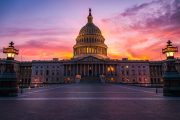
President Obama’s Race to the Top program was intended to award states that implement “coherent, compelling, and comprehensive education reform.” Governors from a variety of states were excited at the prospect of competing for a share of the $4 billion set aside for the program, but the excitement very quickly transformed into disappointment when Secretary of Education Arne Duncan announced that only two states would be receiving a share of the money: Delaware and Tennessee.
Some school districts view Race to the Top as a wise and generous federal investment that will outdo the No Child Left Behind program, whose promises of federal money were unfulfilled. The purpose of Race to the Top is to award states who advanced reform in four primary areas:
• Adopting standards and implementing assessments that would enable students to succeed in the workplace and compete in the global economy
• Creating data systems that measure student growth and success that can be utilized by teachers and principals to help foster instruction
· Recruiting, rewarding, and retaining effective teachers and principals where they are needed most
• Bringing about turn-around in the lowest achieving schools
According to the White House website, Race to the Top “will go to States that are leading the way with ambitious yet achievable plans” to help bring about these reforms, and the winners will “help trail-blaze effective reforms and provide examples for States and local school districts throughout the country to follow as they too are hard at work on reforms that can transform our schools for decades to come.”
The scoring process consists of five reviewers who read each state’s proposal and allot a possible 500 points to the states based on a rubric. The average of the five scores is the final score assigned to a state.
Governors across the country are disturbed by the process of choosing winners for the Race to the Top funds. Governor Bill Ritter Jr. of Colorado was particularly perturbed by the scoring, which landed Colorado in 14th place. Colorado had hoped to be the recipient of $377 million, but according to the Governor, the scoring by the anonymous judges was obscure and vague. He adds, “It was like the Olympic Games, and we were an American skater with a Soviet judge from the 1980s.”
On the other hand, Colorado’s loss may be a blessing in disguise for Governor Ritter, since many Coloradans thought the contest to be a federal intrusion. As of now, Governor Ritter remains unsure as to whether he should reapply for the second round.
In addition to Colorado, other states are confused about why only two states were awarded with Race to the Top funds, and question the rubric by which winners are chosen. Arizona, California, Nebraska, South Carolina, and South Dakota are among the states that are unsatisfied with the contest and remain undecided as to whether they will continue to participate in the future.
Among the various criticisms of the scoring process, states are most upset by the governments’ requirement that participating states must receive support from 100 percent of school district’s and teachers’ unions to fulfill objectives like expanding charter schools, reworking teacher evaluation systems, and turning around low achieving schools. Because of this prerequisite, states like Florida were eliminated from the contest, as they could not muster the necessary support from the local unions.
Critics argue that for a small state like Delaware, with only 38 districts, assembling the required support is a simpler task than states like California, with 1,500 districts.
Of the $4 billion earmarked for Race to the Top, Delaware and Tennessee were awarded $100 million and $500 million respectively, leaving $3.4 billion to be awarded in the next round of the contest to 15 winning states, expected to be announced in September.
While many states are unsatisfied with the results, the administration continues to see Race to the Top as a success. Forty states submitted proposals for the Race to the Top grants in January, rewriting education laws to vie for the awards. California passed several new education laws favored by Duncan, and Michigan passed laws that permit state takeover of failing schools and tying teacher’s evaluations to students’ test scores.
Duncan hopes to see the same ambition in the next round of Race to the Top, but several states have wavered in their interest when a new rule was passed capping award money to be spent over four years. As a result, California, which requested $1 billion, is now capped at $700 million; Louisiana requested $314 million, but can only hope to win $175 million. Likewise, South Carolina stands to receive a possible $175 million, though they applied for $300 million.
South Carolina’s superintendent of education Jim Rex explains, “That’s a lot of money, and we need it. But spread it over four years, with all the federal expectations that come with it, and you have to ask whether you have the time and capacity to gear up again for the arduous work of filing a new proposal. We’re still weighing that.” For the same reasons, Florida, who is now capped at $700 million, is still considering whether reapplication is worthwhile.
Gaining support from 100 percent of school districts proves to be the inhibiting factor for most states. Colorado received a relatively low score on the rubric because the state failed to persuade 40 out of 178 school districts to participate in the contest. Governor Ritter explains, “Many tiny school districts don’t like federal mandates. So even as I believe that school reform is important for our country, it’s also important that people in Washington understand that one size doesn’t fit all.”
President Obama is satisfied with the results of the program and plans to continue Race to the Top in the future, allocating $1.35 billion for the program in the FY 2011 budget. Many of the President’s conservative critics may believe that there are better ways to allocate education funds, but a much more fundamental question is whether the federal government should be involved in funding education in the first place.




